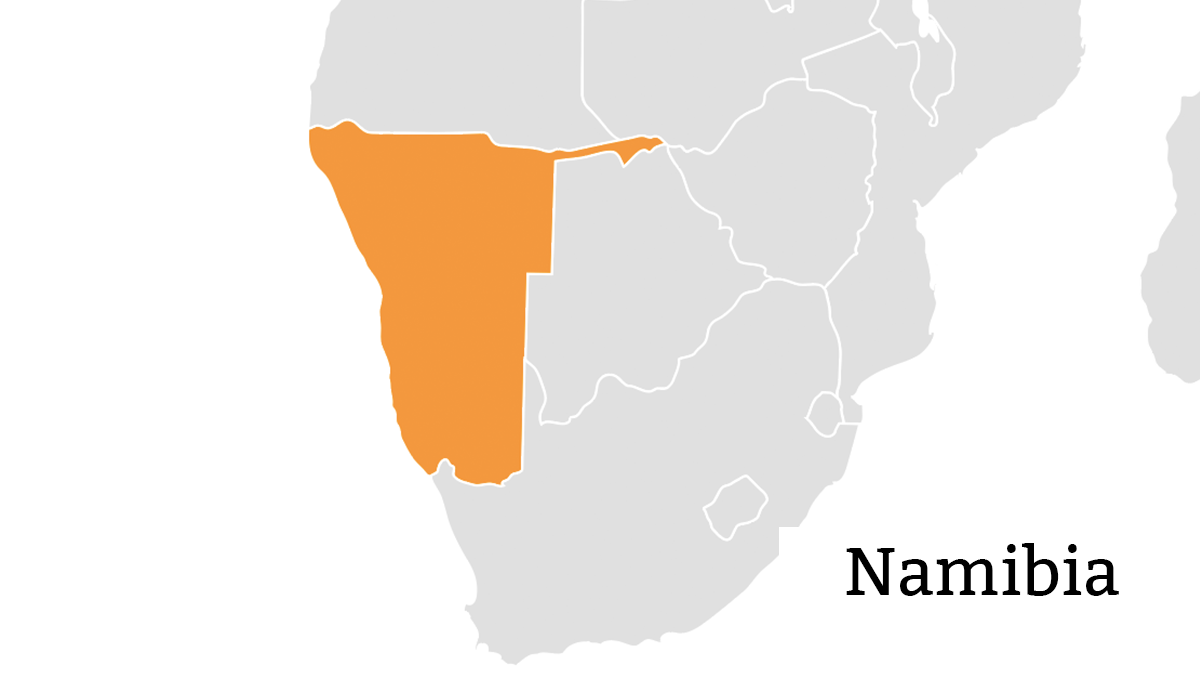
In 2006, Namibia was viewed as a telecommunications laggard when compared to countries of similar profiles in the region. Namibia had not updated its telecommunications legislation, as many other governments in Africa had done, nor did it have an independent regulator that was well-resourced or planning ahead for the sector changes on the horizon. The telecommunications market in the country had also not liberalised and Mobile Telecommunications (MTC) remained the only mobile network operator, facing no competition despite the end of its monopoly in 2001.
Telecommunications service provision was made more complex in Namibia because its territory is vast despite a population that is under two million. Internet access provision to a relatively small number of people with different income levels based in widely varying geographic locations meant that primarily wealthier citizens in a handful of urban areas had internet access and those in rural areas with lower incomes were largely unconnected. As a result, mobile penetration stood at around 26% and fixed teledensity approximately 7%.
Recognizing that ICTs help propel overall economic and social development, the government published a long-awaited telecommunications policy in 2009. Shortly after it established a Ministry of Information and Communication Technology to streamline work in the sector. The policy’s aim was to contribute to the government’s Vision 2030 objectives by positioning ICTs as the most important sector in the country. Steps the government hoped to take in this direction included creating an enabling environment for telecommunications and ICTs to flourish as well as the continued liberalization of the sector. In the same year, the government also invested USD$600 million in order to eventually bring a landing of the West Africa Cable System (WACS) to the coastal city of Swakopmund.
A year later, the telecommunications sector was more competitive with three mobile service providers, and service costs dropped by more than 50%. However, the newly established Communications Regulatory Authority of Namibia (CRAN) had yet to develop the capacity or exercise its power to better facilitate further growth in the sector through the promotion of competition and infrastructure deployment, particularly where fixed-line services and broadband deployment were concerned.
The instrument to cement and sustain the positive transformation for telecommunications in Namibia came in 2011 through Government Gazette No. 4714. With this document, the Minister of Information and Communications Technology officially brings into force the Communications Act, 2009, which provides the framework for telecommunications, broadcasting, and postal sector regulation. The Act also establishes CRAN and outlays the scope of its day-to-day functioning and management as well as describing the powers it has to intervene within the sector, including licensing.
With regard to CRAN, the gazette details nine separate general notices that together form the framework for the newly empowered regulatory body. The notices include regulations on transitional and licensing procedures for broadcasting and telecommunications, spectrum use licenses, tariffs and interconnection agreements, consumer complaints, and the publication of forms for these complaints and transitional and licensing procedures for telecommunications, broadcasting, and spectrum use.
Within the Act, the regulation of spectrum use is designed to offer maximum flexibility by enabling spectrum re-farming and the ability to utilize the most appropriate technologies for broadband deployment (technology neutrality), even if the technology is new. The Act also provides for regular publication of market dominance analyses every three years. From these reports, regulation then imposes specific duties attached to their licenses to support broadband access for all on operators identified to hold significant market power. This measure is particularly important in light of the high degree of state ownership in the sector, which contributes to higher prices and lower competition amongst existing operators.
The official formation of CRAN and the powers conferred to it helped the Namibian telecommunications sector develop in such a manner that it transformed into a regulatory leader among peer nations. The regulations related to spectrum in Government Gazette No. 4714 helped Namibia become one of the first African countries to complete the analog transition and migrate to digital terrestrial television in order to release spectrum that helped increase broadband coverage while lowering broadband prices – all before the June 2015 ITU deadline.
Namibia has made great strides in releasing various spectrum bands and also successfully refarming spectrum in the 900MHz band for 3G services, in the 1800MHz band for FDD-LTE exclusively, and in the 2600MHz band for TDD-LTE, which helped the country replace its legacy WiMax networks.
The establishment of CRAN with powers to shape telecommunications in Namibia also yielded an increasingly sophisticated regulator that could more closely monitor the market and make evidence-based decisions that facilitate high-speed internet access for all Namibians. This is seen in studies and regulatory action CRAN has undertaken since its creation, including related to infrastructure sharing and the elaboration of a universal access and service policy in 2013 that had been delayed since 2011.
The sum of these efforts has pushed broadband access to 70% in Namibia and now at least 95% of the population has at least 2G mobile network coverage. Moreover, the government has recently started working on a new broadband policy, which is still in draft form.
Suggested Citation: Alliance for Affordable Internet (2019). “Namibia: Creating a positive regulatory environment.” Good Practices Database. Washington DC: Web Foundation.
